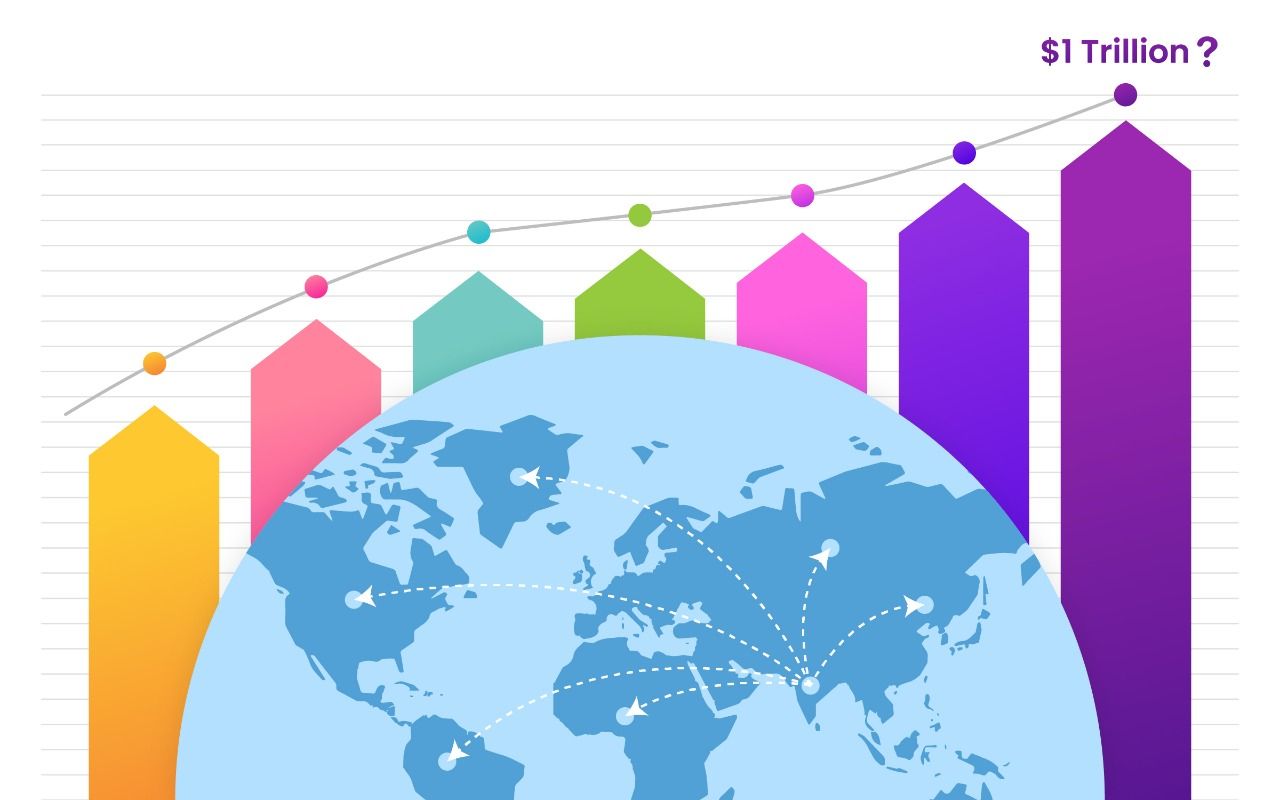Decrypting India's Exports: Can India reach the 1 Trillion Dollar mark?

This post has been authored by Aniket Raj, the Economic Research Intern at Arthashastra Intelligence.
The Ministry of Commerce in several instances has highlighted that, for India to achieve its target for double-digit growth, we need to increase exports. This has been the primary agenda of the central government, which is one of the reasons for various export-related incentive schemes. It can be inferred from the figure, that India hasn’t been a predominantly exporting country in the pre-pandemic period, as the year-on-year export growth wasn’t quite high as it should have been. But this scenario has changed in the past 2 years since 2020, as India has seen an average growth of approximately 30-40%. Such progress is not possible without India’s domestic industries. While the world was recovering from the pandemic, India reached the valuation of 418 billion in manufacturing exports in FY2022.
Source: Macrotrends; Compilation and Visualization By Arthashastra Intelligence.
The question that might come to your mind is, how did we achieve this? How is it possible during an ongoing pandemic where global trade came to a grinding halt for almost 2-3 months, there is such a growth that can be seen?
The answer lies in a recent report by Bain & Company, which said that India has the potential to become a trillion-dollar manufacturing exporter by 2028. While the sectoral growth projection looks promising, it is safe to say that these manufacturing export numbers are here to stay. The six primary sectors that can help India to achieve the 1 trillion target, include chemical, pharmaceutical, industrial machinery, electrical and electronics, automotive, and textile & apparel. As the anticipated CAGR of all these sectors is ranging from 15% to about 40%.
Recently India opened up its gates to semi-conductor manufacturing, which makes electrical and electronics as a prime sector that is expected to grow by 35%-40%. With Samsung opening its manufacturing unit in India, other major global mobile phone manufacturers like Wistron and Foxconn are also planning to open manufacturing units. Similarly, India has always had a profound export for finished steel, as the price of raw materials declines India is likely to become more globally competitive in this sector.
There can be numerous international, as well as national and regional factors that helped achieve this. The pandemic is one such factor that created a supply chain disruption that aided supply chain diversification, which turned the tides of global trade flows as the growing dominance of Chinese commodities became very clear. According to Bain & Company report, American companies considered India among the top four destinations for relocation operations which makes India a viable substitute for China. Over the past few years, the environment has become a key issue discussed by major superpowers in the world, India has taken significant steps to reduce CO2 emissions in comparison with China while also boosting its manufacturing towards the creation of green energy that making India a favorable choice as it helps the foreign companies comply with their environmental standards.
Export-led growth requires stimulus from the government to create a favorable export environment and motivate the producers. Various schemes like Production linked incentives, Rebates of Duties & taxes on merchandise export, etc., have helped Indian exports in multiple ways. Government policies like easing FDI norms, dispute settlement policies, and focused development of ports through Sagarmala helped make the environment conducive for export. Indian Government budgeted a 35% year-on-year increase in CAPEX for 2023 to 100 billion for increasing the capacity utilization and improving the ability to accommodate higher production and demand levels.
Strategic mergers and acquisitions and higher venture capital-led Investments have always been a part of companies’ growth strategies. This can accelerate the growth profiles of the Indian manufacturing sector making them more efficient for the global competition. This has helped them open new markets and increase their capabilities. Of the $108 billion M&A deals in 2021, 15.7% were in the manufacturing sector. Also, cross-border M&A is growing steadily, and it has grown from 0.4 billion in 2017 to 1.2 billion in 2021. While PE/VC investments have reached $70 billion in 2021 predominantly in sectors like chemical, pharmaceutical, automotive, and electronics sectors. As India is involved in more bilateral and new age quadrilateral trade agreements it helps not only expand its presence in Asia but also in Non-Asian countries.
India\’s manufacturing sector looks promising as these factors are still prevalent and continue supporting the manufacturing-led export. But as said in philosophy, it is “difficult to grab an opportunity, but it’s more difficult to hold on to it”. The challenge in front of Indian exports is the same. We have grabbed an opportunity created by the pandemic, but now we need to hold on to it.
References
- Retrieved from Bain & Company (Author: Deepak Jain, Sushil Pasricha, and Sambit Patra): The Trillion-Dollar Manufacturing Exports Opportunity for India
- Retrieved from Times of India (Author: Times of India Report): India\’s manufacturing exports to reach $1 trillion by FY28: Report
- Retrieved from The Economic Times (Author: Anand JC): The sectors that would matter in India\’s race to be a manufacturing powerhouse
- Retrieved from Business Standard (Author: Shreya Nandi): India\’s manufacturing exports may touch $1 trillion by FY28: Bain
